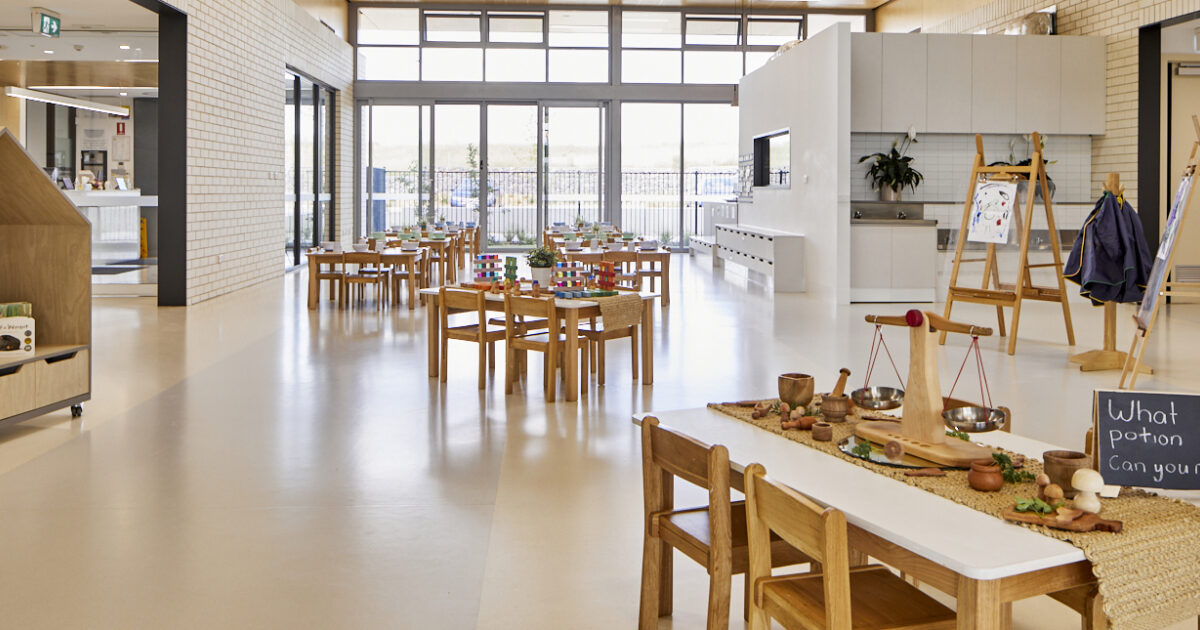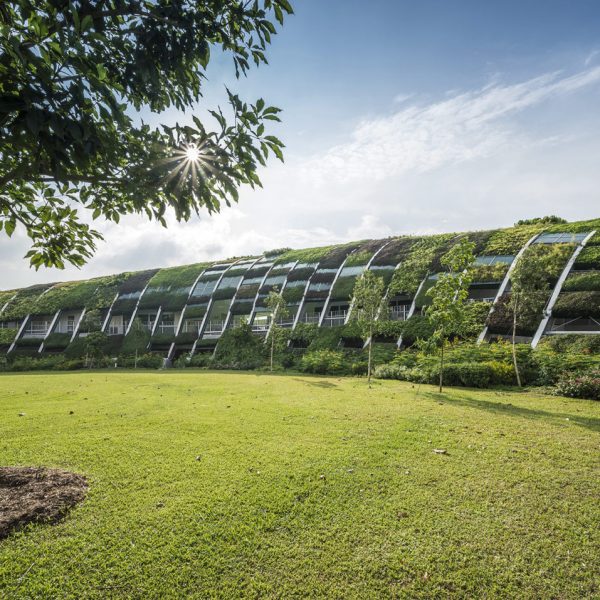Cox Architecture puts pedagogy at the core to create Burgmann Early Learning Centre

Architects from Cox Architecture used the Reggio Emilia educational philosophy as a guide when starting their design process for Canberra’s Burgmann Early Learning Centre, which places a high value on experiential learning for children.
The centre’s design is driven by the pedagogical strategy that a child’s environment is fundamental to their development and incorporates indoor/outdoor connections and qualities of rhythm and movement, warmth, accessible scale and flexibility, Architecture AU shared.
By emphasizing natural materials and lighting, adaptable interiors, clear organization and accessibility, the design approach enables and supports curiosity and creativity.
The Burgmann centre has a central piazza and shared learning area which caters to education and play for all children, as well as acting as a gathering space. Four ‘home rooms’ offer children a sense of belonging, with specific shared spaces such as a large art studio and kitchen and dining area completing the inside.
In the outside space, children have areas for running, climbing, water and sand play, and a nature play zone. There is a sensory garden which stimulates children’s senses through textured surfaces, perfumed plants and the use of other natural materials to engage them.
To learn more about Burgmann ELC, please see here. The original coverage of this story can be found here.
Popular

Practice
Provider
Quality
Research
Workforce
New activity booklet supports everyday conversations to keep children safe
2025-07-10 09:00:16
by Fiona Alston

Quality
Practice
Provider
Research
Workforce
Honouring the quiet magic of early childhood
2025-07-11 09:15:00
by Fiona Alston

Quality
Practice
Provider
Workforce
Reclaiming Joy: Why connection, curiosity and care still matter in early childhood education
2025-07-09 10:00:07
by Fiona Alston













